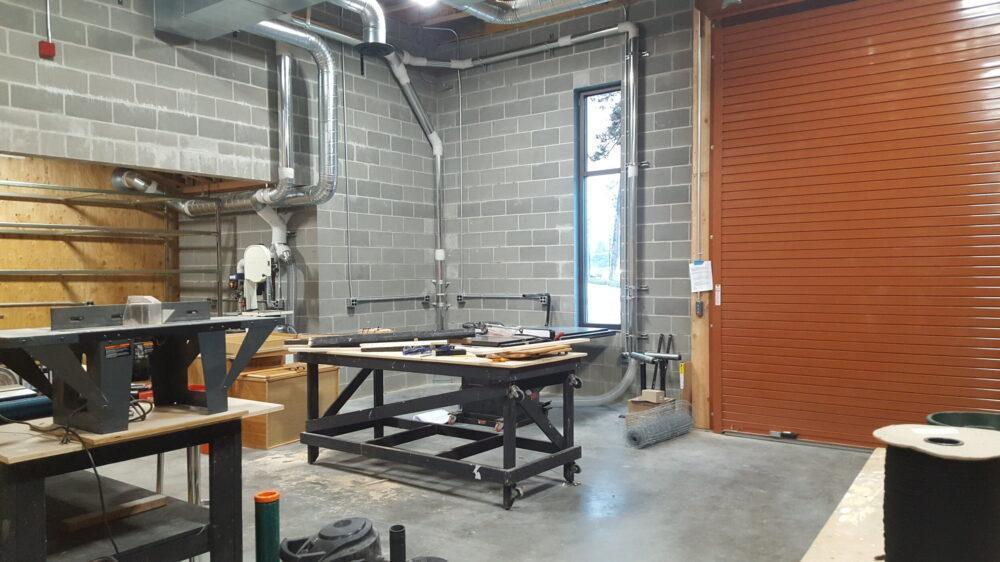Daniel Giorello | Staff Writer
Jeremey Randrup | Arts and Culture Editor
Science fiction has always been something of a deliberate genre; that is, the stories told within its grand scope are always meant to show us a truth about ourselves or our reality and often it goes out of its way to prove that tried and true adage that the more things change, the more they stay the same. In Brad Pitt’s latest interstellar escapade “Ad Astra,” this truth is held up in more ways than one. It’s a big film that can’t answer every question it raises, but it exists as one of those rare thoughtful stories told with a more contemplative than critical lens (though it does have plenty to say about our obsession with consumerism as well).
Pitt plays an esteemed but emotionally distant astronaut Roy McBride, who learns that his father, the revered Clifford McBride (Tommy Lee Jones) may still be alive near the edge of our solar system. When all human life is threatened by unknown energy pulses coming from his father’s last known location, Roy takes the opportunity to uncover the mystery and rescue his estranged dad. The film would be sweet if it wasn’t so bleak for a majority of the runtime. Often the scenery reflects the tone of the film, as wherever we follow Roy, his surroundings are often desolate and provide an excellent backdrop to Roy’s vapid emotional state.
As the plot continues, we explore more of Roy’s thought process as he muses on our inability to move on from ourselves and his own tortured logic. He’s a man who isolates himself but can’t seem to answer why, and has no way to reconcile with himself other than to bottle everything up and continue forward. Director James Gray does an excellent job of highlighting this and showing the vain nature of Roy’s uphill battle by displaying the consequences of his self-destructive cycle, and wisely keeps from making his monotone mentality appealing or entrancing.
It isn’t just characters that are appealing in this film; this may be one of the most visually pleasing movies we’ve seen in a while. Everything from set design to sound quality is tuned to fill the ears and engage the eyes with long, enveloping shots and environments that look so believable it’s hard to see them as anything but a snapshot of our future. The cinematography of the movie is truly gorgeous, showcasing the future of humanity and the state of our species as we reach up into the stars to study the unknown. Cinematographer Hoyte van Houtema makes use of the verticality in space with shots panning up or down. Houtema’s verticality strategy is from start to finish, as one of the opening shots is a downward pan of Pitt climbing down a ladder. The audience is never disoriented by Houtema’s shot list. Houtema makes sure to use the establishing shot as reference and work from there, which seems to be especially crucial when most of the movie is in space. The only time we ever felt a little disoriented from the camera work was when it was intended. Houtema’s work pays attention to the world of “Ad Astra” that the writers have created.
In the movie, space travel has become much more of a normality. The moon has become a tourist trap and research stations are littered throughout the local system. Being an odyssey-type movie, the audience is able to see how many locations are depicted, brought out by Houtema’s camera-work. Research stations on the frontier are depressing and feature long-winding hallways and industrial machinery where you’re reminded by cut-and-dry posters to stay happy. The thing is, since these things are fairly pedestrian during the time of the movie’s portrayal, it’s up to the viewer to catch details of the world. You only see the brands and the posters in the background, yet Houtema’s shot composition ensures that we get glimpses of the future that are subtle.
Despite all of this, the film isn’t quite able to match its ambitions with its actions. “Ad Astra” isn’t a movie that specifically focuses on the state of technology, but there is obviously a point where tech is integral to the progression. The audience sees the brilliant and bustling moon colonies, but the United States space-military branch still utilizes gold-foiled rovers that look like they’re from the earliest days of human space travel. Brad Pitt is able to get to Neptune from Mars in a matter of months. Every sci-fi has its space-magic that explains foundations in the plot, yet “Ad Astra” doesn’t even use the space-magic to explain itself. The movie’s emphasis is on the relationship between humanity and space, but a few lines and shots could answer trivial questions. While the argument can be made that the film ends on a positive note, it does so without acknowledging some crucial moments in the story that some might regard controversially. It doesn’t ruin the film’s overall impact but it does lose a small amount of its splendor.
“Ad Astra” managed to add something unique to the sub-genre of space-odyssey movies. While it isn’t up to the challenge of wrapping up everything it promises or makes a note of, this is one of those rare films that proudly stands on its own and kept us involved throughout its two hour runtime. There’s plenty of room for more of the introspective sci-fi film, as we can rate this one a good 8/10 pinecones.













